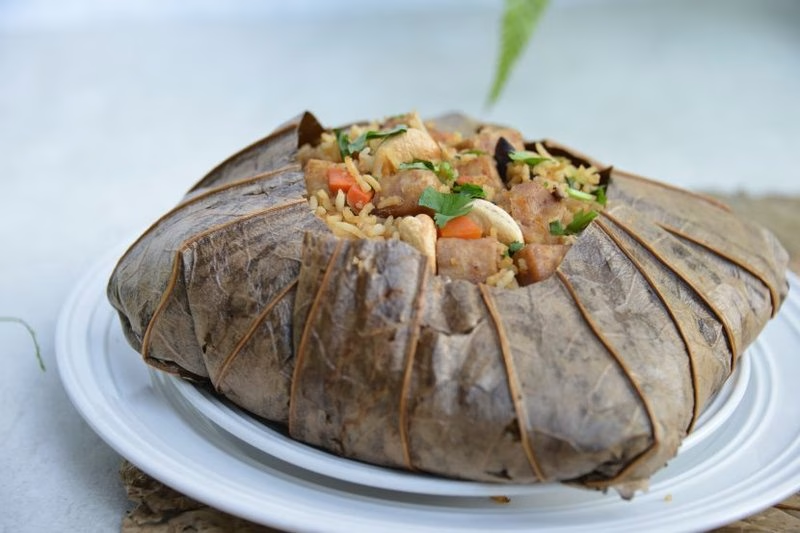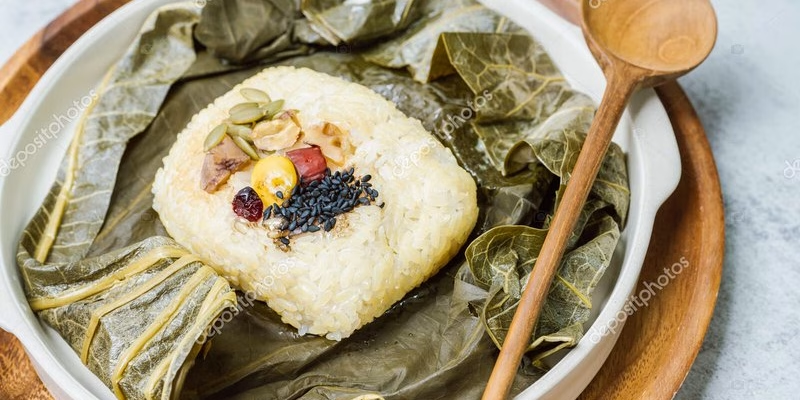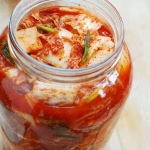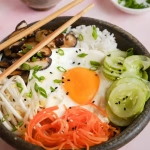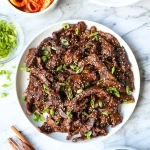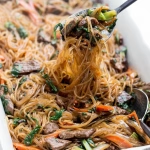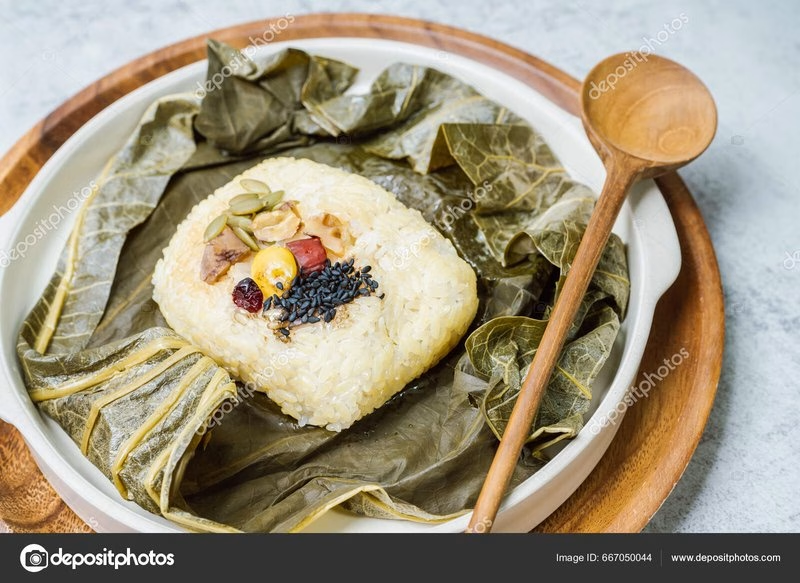
Have you ever tasted the intriguing flavors of Yeonnipbap (Lotus Leaf Rice)? This traditional dish from Korea is not just a meal; it’s an experience. Wrapped in fragrant lotus leaves, this rice dish has a unique aroma and depth, making it a popular choice for festivities and family gatherings. The careful infusions of various ingredients create a dish that’s both savory and aromatic.
Originating from the heart of Korean cuisine, Yeonnipbap embodies rich cultural significance. It symbolizes good fortune and is often served during special occasions. In this article, you will learn about the essential Yeonnipbap (Lotus Leaf Rice) ingredients, variations of this delightful dish, and a straightforward guide on how to make Yeonnipbap (Lotus Leaf Rice) at home. Ready to dive into making your very own Yeonnipbap? Let’s get cooking!
Ingredients
| Ingredient | Measurement | Description |
|---|---|---|
| Glutinous rice | 2 cups | Glutinous rice provides a sticky texture perfect for holding flavors. |
| Lotus leaves | 4-6 leaves | Lotus leaves impart a subtle fragrance and keep the rice moist while steaming. |
| Pork belly | 200 grams | Pork belly adds a rich depth to the dish. Use high-quality meat for the best flavor! |
| Shiitake mushrooms | 5-6, fresh or dried | Shiitake mushrooms elevate the flavor with their earthy notes. |
| Garlic | 3 cloves, minced | Fresh garlic enhances the aroma and depth of flavor in Yeonnipbap. |
| Onion | 1 medium, chopped | Onion provides a sweet base flavor that brings all other ingredients together. |
| Soy sauce | 2 tablespoons | Soy sauce adds saltiness and umami, crucial for a well-balanced dish. |
| Spring onions | 2, chopped | Spring onions bring freshness and a nice crunch to the rice. |
Step-by-Step Instructions
- Step 1: Prepare the Ingredients – Start by soaking 2 cups of glutinous rice in water for at least 4 hours. This enhances the texture and flavor of your Yeonnipbap (Lotus Leaf Rice) significantly. While it’s soaking, chop the pork belly, shiitake mushrooms, onions, and garlic.
- Step 2: Marinate the Meat – In a bowl, mix the chopped pork belly with soy sauce, minced garlic, and a sprinkle of pepper. Allow this to marinate while you prepare the rest of the ingredients.
- Step 3: Sauté the Vegetables – Heat a tablespoon of oil in a pan and sauté the chopped onions until they turn golden brown. This forms a delicious base for your Yeonnipbap (Lotus Leaf Rice).
- Step 4: Add the Mushrooms and Pork – Add the shiitake mushrooms and marinated pork belly to the pan. Cook until the pork is browned and cooked through. This aroma will have your mouth watering!
- Step 5: Combine Rice and Ingredients – Drain the soaked rice and add it to the sautéed ingredients. Gently mix everything together, ensuring the rice is well-coated.
- Step 6: Wrap in Lotus Leaves – On a large cutting board, lay down the lotus leaves, with the shiny side up. Place a generous amount of the rice mixture on each leaf. Fold the edges over to create a parcel, securing all the ingredients inside.
- Step 7: Steam the Rice – Carefully place the wrapped parcels in a steamer. Steam for about 30-40 minutes. The lotus leaves will release their fragrance, further enhancing the dish.
- Step 8: Serve and Enjoy! – Once cooked, unwrap each parcel and serve your homemade Yeonnipbap (Lotus Leaf Rice) hot. This dish can be paired with a side of spicy kimchi or a refreshing salad for a full meal experience.
Pro Tips
- Soak the rice longer: For extra sticky rice, soak for 6-8 hours instead of just 4.
- Experiment with proteins: You can substitute pork belly with chicken or tofu for variations of Yeonnipbap (Lotus Leaf Rice).
- Use fresh herbs: Adding fresh herbs like mint or basil elevates flavors and freshness.
- Don’t rush the steaming: Allow the rice to steam well to fully absorb the flavors of the lotus leaves.
- Garnish before serving: Adding a sprinkle of sesame seeds and chopped spring onions just before serving adds a beautiful touch.
Nutritional Information
| Nutrient | Per Serving (approx. 1 cup) |
|---|---|
| Calories | 350 |
| Protein | 10g |
| Carbohydrates | 60g |
| Saturated Fats | 3g |
| Fiber | 2g |
| Cholesterol | 30mg |
| Sugars | 1g |
| Fat | 7g |
FAQs
What is the best way to store Yeonnipbap (Lotus Leaf Rice)?
Store leftovers in an airtight container in the refrigerator. It lasts for up to 3 days.
Can Yeonnipbap (Lotus Leaf Rice) be made vegan or gluten-free?
Absolutely! Substitute meat with tofu and use gluten-free soy sauce for a vegan and gluten-free version of Yeonnipbap (Lotus Leaf Rice).
What are the best side dishes to serve with Yeonnipbap (Lotus Leaf Rice)?
Pair it with spicy kimchi or a zesty cucumber salad for a refreshing balance.
How long does it take to prepare Yeonnipbap (Lotus Leaf Rice)?
Preparation takes about 15 minutes, plus 4+ hours of soaking time and 40 minutes of cooking time.
Can I freeze Yeonnipbap (Lotus Leaf Rice) for later?
Yes! Wrap the parcels tightly in foil before freezing. They can be frozen for up to a month.
What variations of Yeonnipbap (Lotus Leaf Rice) are popular?
You can find variations with different meats, seafood, or even vegetarian options packed with seasonal vegetables.
How do I enhance the flavor of Yeonnipbap (Lotus Leaf Rice)?
Experiment with different herbs and spices, such as ginger or black pepper, for additional flavor!
Can I make Yeonnipbap (Lotus Leaf Rice) in a rice cooker?
Yes! You can prepare the rice in a rice cooker and follow the same wrapping and steaming steps.
In summary, making Yeonnipbap (Lotus Leaf Rice) at home is an exciting culinary adventure that brings the vibrant flavors of Korean cuisine right into your kitchen. It’s a delightful way to impress family and friends during special occasions or just to treat yourself any day of the week.
We hope you will give this recipe a try and enjoy the aromatic experience of Yeonnipbap (Lotus Leaf Rice). Don’t forget to share your cooking experience or any personal tweaks to the recipe in the comments below. Happy cooking!
